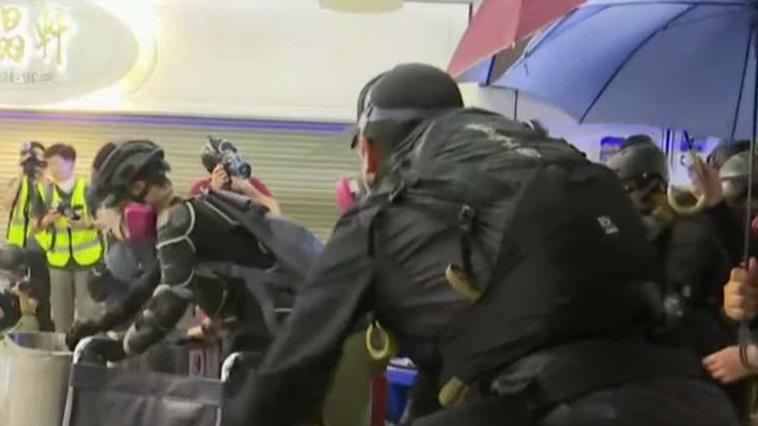Why Hong Kong's fixed exchange rate, once attractive to foreign investors, is now under pressure
The U.S.-China trade war and anti-Beijing protests in Hong Kong are testing the strength of the Hong Kong dollar’s 36-year peg to the U.S. dollar, which has helped make it an attractive market for foreign investment.
In 1983, as Hong Kong approached an uncertain future outside the auspices of the British crown, the Hong Kong Monetary Authority — the city’s central bank — made the decision to peg the Hong Kong dollar (HK$) to the U.S. dollar (US$). Since 1983, the Hong Kong dollar was pegged at a rate of HK$7.8 to US$1. In an article for the South China Morning Post, Karen Yeung and Amanda Lee noted that this peg has sustained the island’s economy through a number of major economic crises.
Maintaining a “pegged currency,” or “fixed exchange rate,” can be advantageous for nations or regions like Hong Kong that rely heavily on trade and foreign investment. Having a consistent currency means that foreign companies purchasing goods or investing in Hong Kong do not have to worry about risks associated with fluctuation in currency values. They know every time they buy HK$1, it will cost them US$0.13. This means that when they buy a bond in Hong Kong, they do not have to worry that the U.S. dollar will appreciate before they sell that bond — lowering the value when converted back into U.S. dollars. By removing this risk, Hong Kong has situated itself as attractive to foreign investors.
When investing in countries without fixed exchange rates, investors will often buy insurance when converting currencies to protect them against the risk of their home currency’s appreciation.
The trouble with fixed exchange rates is that they are difficult to maintain. In order to keep the Hong Kong dollar worth US$0.13, the central bank of Hong Kong has to keep large reserves of U.S. dollars. In fact, according to the South China Morning Post, the Hong Kong Monetary Authority holds US$449 million in its reserves. It then uses this currency to buy Hong Kong dollars when the Hong Kong dollar’s value starts to fall below the pegged rate. When the Hong Kong dollar value rises above the peg, it begins to sell more Hong Kong dollars until the value returns to the set rate.
Another drawback of this system is that Hong Kong is forced to abandon an independent monetary policy. The instruments it would usually use to buy and sell bonds — to affect interest rates — have to be used to buy and sell currency to maintain the peg.
CLICK HERE TO READ MORE ON FOX BUSINESS
Economic shocks to the Hong Kong economy resulting from both the protests against the government in Beijing and from the U.S. trade war with China, are already putting strain on the fixed exchange rate. Decreasing foreign investment in the city could decrease the demand for the Hong Kong dollar and so drive down the currency’s value. This would force the Hong Kong Monetary Authority to use its U.S. dollar reserves to buy up Hong Kong dollars. The city’s central bank reportedly has enough in reserves to “cover the monetary base around two times over,” but consistently low demand for the Hong Kong dollar could very well strain the system.




















